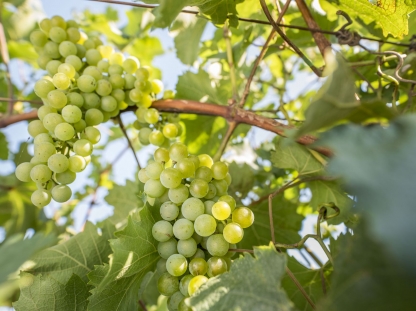Build your own - Smart Insect Trap
In order to remotely monitor the gradation of pests in fruit plantations, a cost effective solution was developed by farm advisors themselves, combing simple mobile device - cheap and second hand android smart phones - and open source web technology.
This solution is used in East-Hungary for over 5 years, and may serve as an example that perhaps not always the most high-tech commercial approach is the best answer to certain situation and need, especially in case of small farmers.
The use of pheromone traps is one of the fundamental methods of pest forecast in orchards and vineyards. It is also required by certain agro-environmental measures and subsidy schemes of the Common Agriculture Policy that farmers operate insect traps according to a certain density of land area (for instance one trap per two hectare) and read the catch results regularly, for example, at least once a day.
Agricultural land is fragmented in many countries of the Central and South Eastern European region therefore the parcels of economic farms are usually quite dispersed, meaning it is a very resource - human, time, cost - consuming task to physically visit and read the catch results of all the separately located traps regularly, to follow the insect gradation. The economic situation of small farms is not favourable either, thus advisors need to investigate and implement technologies, which they can integrate into their services with low cost.
Therefore a simple, affordable, open source, community based solution was designed and introduced to overcome these difficulties and provide farmers and their advisors with an ICT based tool, to let them follow the gradation on-time and on-line, from their web browser. The concept and prototype was developed jointly by two Hungarian advisory centres with the principle objective of providing functionalities that can actually deliver many of the advantages offered by the much pricier commercial options.
The components of the device consist of an entry level android smart phone, a plastic box with a small glass covered hole (for the camera) and a wooden like surface to accommodate the phone and disguise it in a natural looking environment to prevent possible thefts, a delta-shape sex pheromone trap with transparent plastic sheet and the pheromone itself. Because of the low value of the used components - omitting additional costs of more expensive (and visible) ones like solar cell, special sensors, camera, GPS, logger, transmitter - the insurance of the device was neither required.
The technical task of the “android trap” is to shoot one photo a day about the sticky surface of the trap and upload it to the web server via FTP connection. The IMEI number of the SIM card, the date-time, geo-location and battery level data is sent with the image, prefixed to the file name. Thanks to the optimized phone power settings, an unexpectedly long operation time could be reached without recharge, to last even for one season (30-60-180 days by normal-extended internal-external battery). Users may browse images and related data online in a user friendly web-application and download results for further analysis in MS Excel format (v2).
Because the used smart phones are usually the ones not anymore needed by the farmers (good excuse to replace them for newer models:), the real cost of the whole device is appr. 10-15€ each, which contains the trap, the plastic wooden box and if requested, the special battery replacement.
The prototype was developed with a community approach in mind so that anyone can assemble and operate it, following the published guidelines.
Contact: laszlo.papocsi@biokutatas.hu, Hungarian Research Institute of Organic Agriculture
This innovation is part of the i2connect project. The i2connect project aims to fuel the competencies of advisors supporting interactive innovation processes to respond to multiple challenges in European agriculture and forestry. Click here and read more about the project!
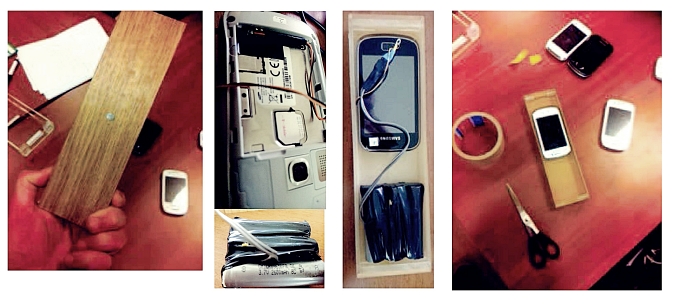
Assembly of the device (Source: Papócsi László)
.jpg)
Modest as it looks, before attaching to the tree (Source: Moravszki Gábor)
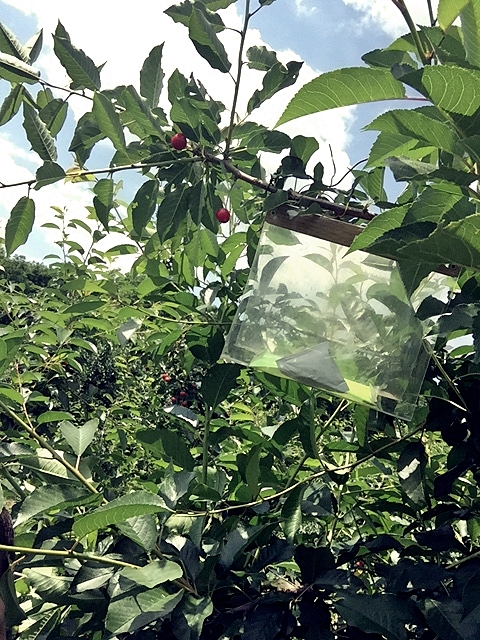
And already on the fruit tree (Source: Moravszki Gábor)
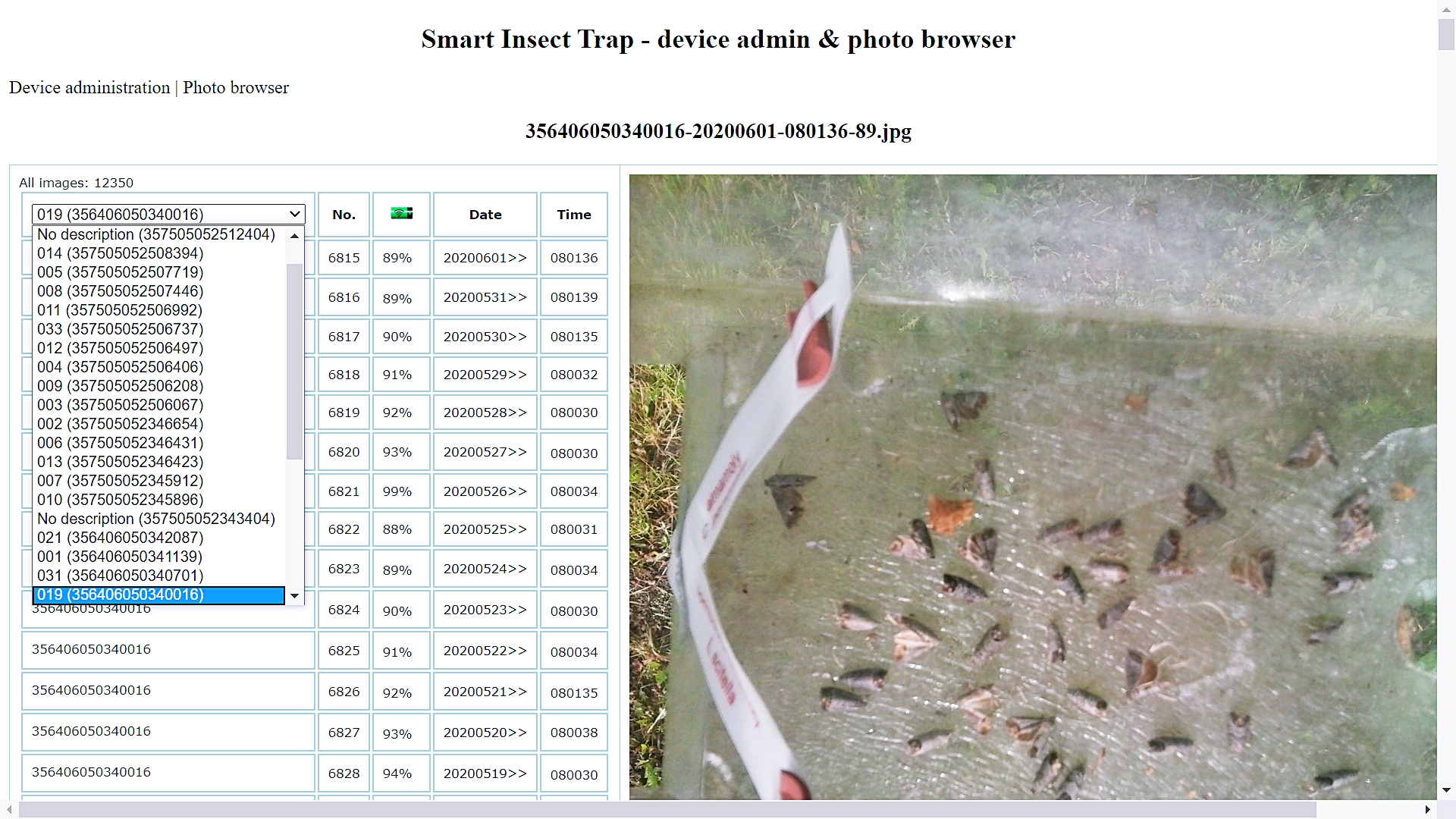
Browsing received images online (Source: Papócsi László)
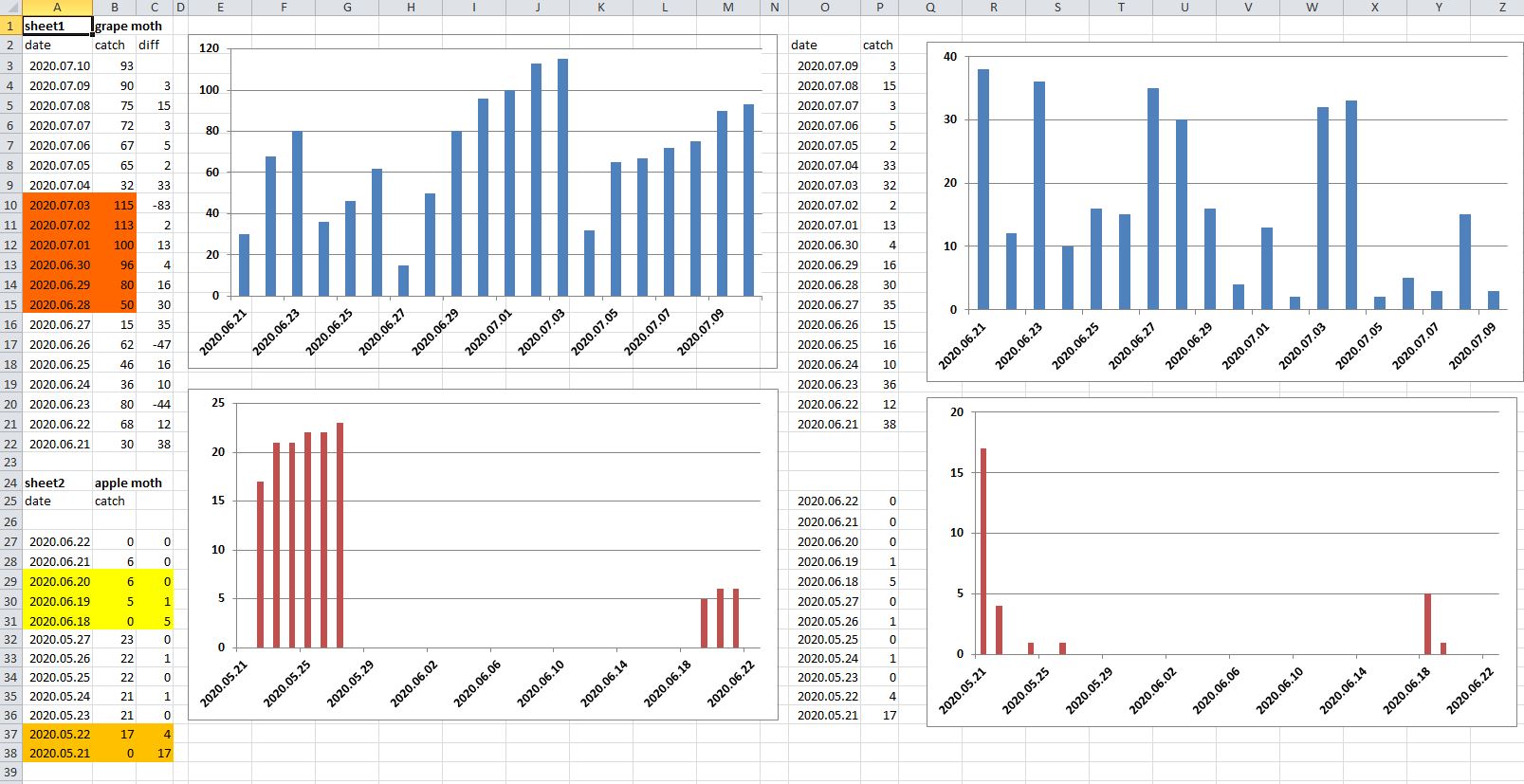
Data can be exported to MS Excel or viewed online (v2), to monitor the trends
(Source: Papócsi László)
